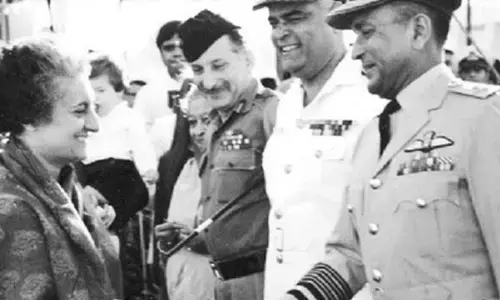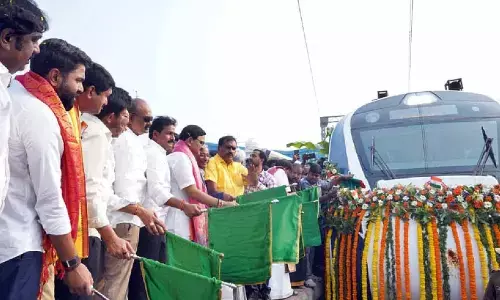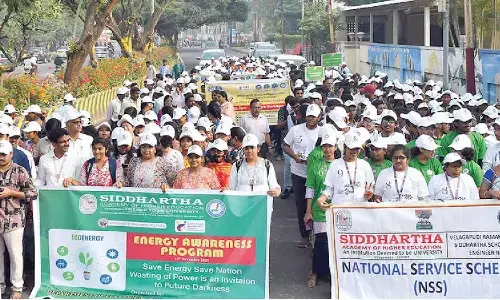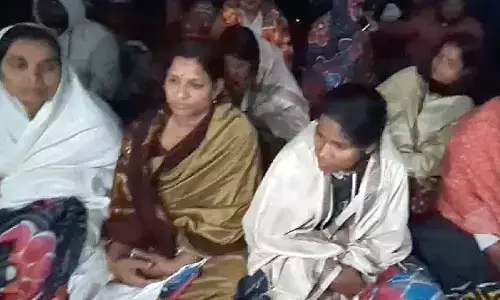Access to education for adolescent girls

Almost half of Indias 125 billion people are aged under 25, making it the youngest nation in the world This can be Indias biggest asset if the energies of the youth are channelised in the right direction This is reflected in Indias policy commitment The government has made efforts to ensure that its youth are healthy, educated and skilled through a number of innovative schemes Particular e
Almost half of India's 1.25 billion people are aged under 25, making it the youngest nation in the world. This can be India's biggest asset if the energies of the youth are channelised in the right direction. This is reflected in India's policy commitment. The government has made efforts to ensure that its youth are healthy, educated and skilled through a number of innovative schemes. Particular efforts are made to ensure education is available to marginalised communities and girls.
However, inequitable gender norms, early/forced marriage, engagement in sibling care, poor delivery of education, and lack of a safe and secure environment in schools, community and at home prevent girls from fulfilling their full potential. Girls' voices are unheard, they have very low aspirations and don't have the courage to take decisions for themselves and pursue life opportunities.
As per a UNICEF report, in India, one in three (34 per cent) adolescent girls (aged 15-19) who are married or in union have experienced physical, sexual or emotional violence by their husband or partner. Among these, more than one in 10 (13 per cent) have experienced sexual violence by their partner. A recent study conducted in six Indian states by Save the Children, reveals that due to lack of safe spaces like school, work place and markets, many bright girls are forced to drop out of school. They do not pursue higher education and restrict themselves from engaging in decent work due to fear, and force themselves to remain inside their homes.
The solution to many of these problems lies in empowering the girls and working with communities and the public education system to make it more welcoming. In India, we have worked to create collectives of girls, bringing together 20-25 adolescents in selected villages, to provide them with a safe space to empower them by building their leadership skills. This helps them to acquire skills, knowledge, experience and confidence, and of course have fun by expressing themselves. This safe space provides them with opportunities to break the silence, reflect, think logically, critically review issues, challenge deep-rooted gender and patriarchal norms, and emerge as effective agents of change.
This process of Participatory Action Research is an innovative, yet simple way, to train collectives to identify their safety and security issues, recognise the proliferation of such threats, understand provisions (legal and cultural) to deal with such acts, and come up with concrete plans to improve the conditions of safety and security in their geographies by engaging with powerholders.
Through this process, girls in India and Nepal have addressed difficult issues like eve teasing, early and forced marriage, brought dropped-out girls back to school, and improved sanitation and hygiene in schools. They have used legal avenues, including accessing the women's helpline when they were abused by boys in the community, as well as in cases of their friends getting married. The cross-border discussion amongst the girls of the collectives has made them aware of the powerful actions taken on the identified issues. By doing so, they are creating a safe space for themselves and for others.
This intervention is not unique. Many organisations across the country work with adolescent girls, build their capacities and enable them to fight for their rights. More efforts are, however, needed to tap into the enthusiasm and optimism of the youth to create a strong network to push for the agenda of safe spaces and safe education.
While young people themselves can be at the vanguard of change, their efforts need to be supported through a combination of mass level awareness and sensitisation of teachers, government officials and elected local self-governments to address the different dimensions of safety and security. It is critical that everyone comes together to ensure that all children, especially marginalised adolescent girls, have safe access to education to become confident and motivated individuals.
(Seema Rajput is Technical Specialist - Education, CARE India. The views expressed are those of CARE India)


















